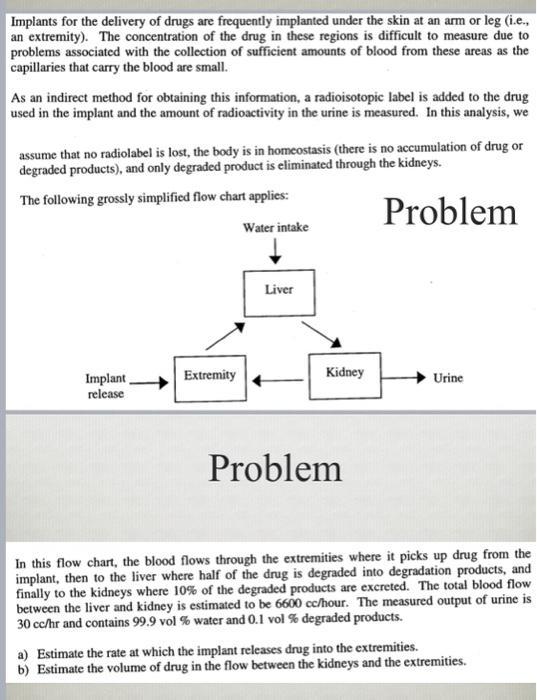Answered step by step
Verified Expert Solution
Question
1 Approved Answer
Implants for the delivery of drugs are frequently implanted under the skin at an arm or leg (i.e., an extremity). The concentration of the

Implants for the delivery of drugs are frequently implanted under the skin at an arm or leg (i.e., an extremity). The concentration of the drug in these regions is difficult to measure due to problems associated with the collection of sufficient amounts of blood from these areas as the capillaries that carry the blood are small. As an indirect method for obtaining this information, a radioisotopic label is added to the drug used in the implant and the amount of radioactivity in the urine is measured. In this analysis, we assume that no radiolabel is lost, the body is in homeostasis (there is no accumulation of drug or degraded products), and only degraded product is eliminated through the kidneys. The following grossly simplified flow chart applies: Water intake Problem Liver Implant release Extremity Kidney Urine Problem In this flow chart, the blood flows through the extremities where it picks up drug from the implant, then to the liver where half of the drug is degraded into degradation products, and finally to the kidneys where 10% of the degraded products are excreted. The total blood flow between the liver and kidney is estimated to be 6600 cc/hour. The measured output of urine is 30 cc/hr and contains 99.9 vol % water and 0.1 vol % degraded products. a) Estimate the rate at which the implant releases drug into the extremities. b) Estimate the volume of drug in the flow between the kidneys and the extremities.
Step by Step Solution
There are 3 Steps involved in it
Step: 1

Get Instant Access to Expert-Tailored Solutions
See step-by-step solutions with expert insights and AI powered tools for academic success
Step: 2

Step: 3

Ace Your Homework with AI
Get the answers you need in no time with our AI-driven, step-by-step assistance
Get Started


